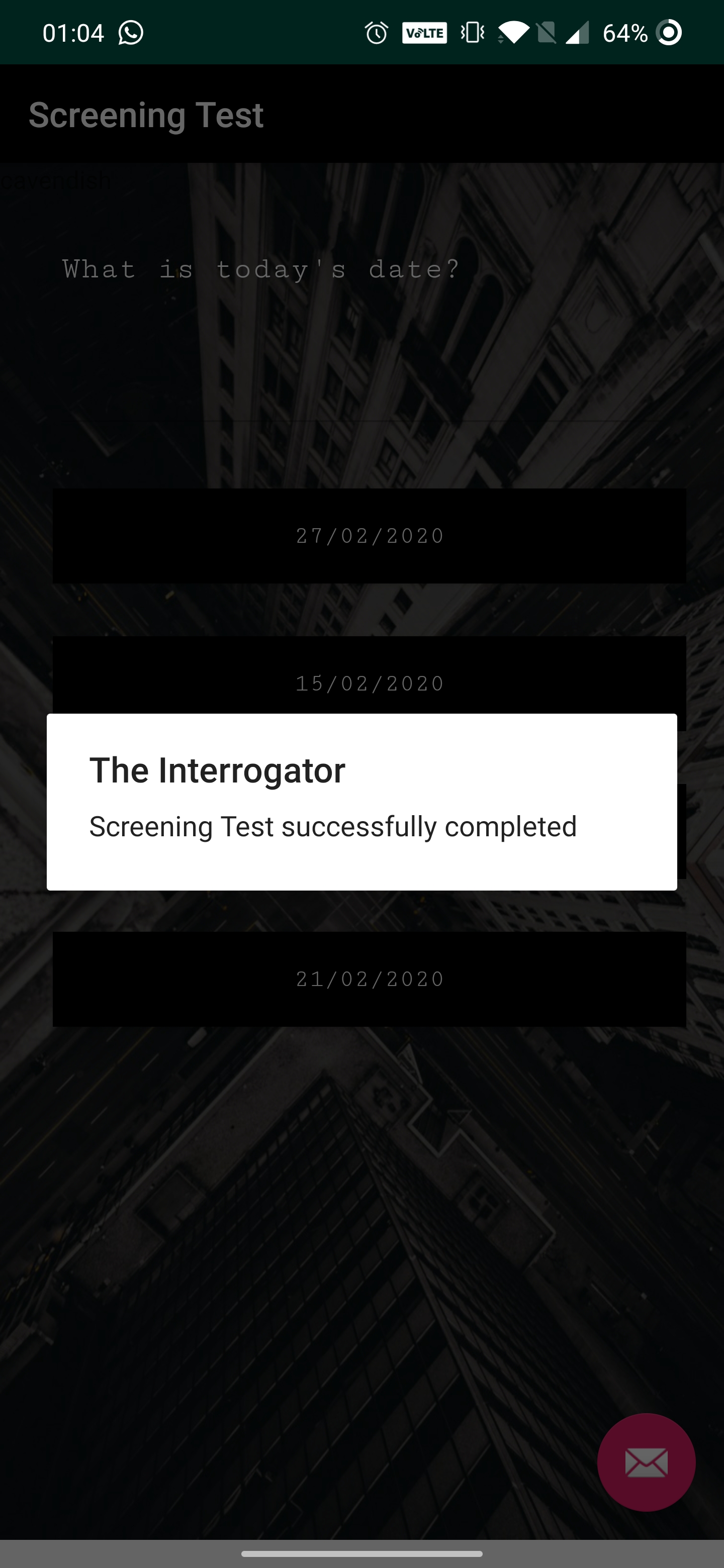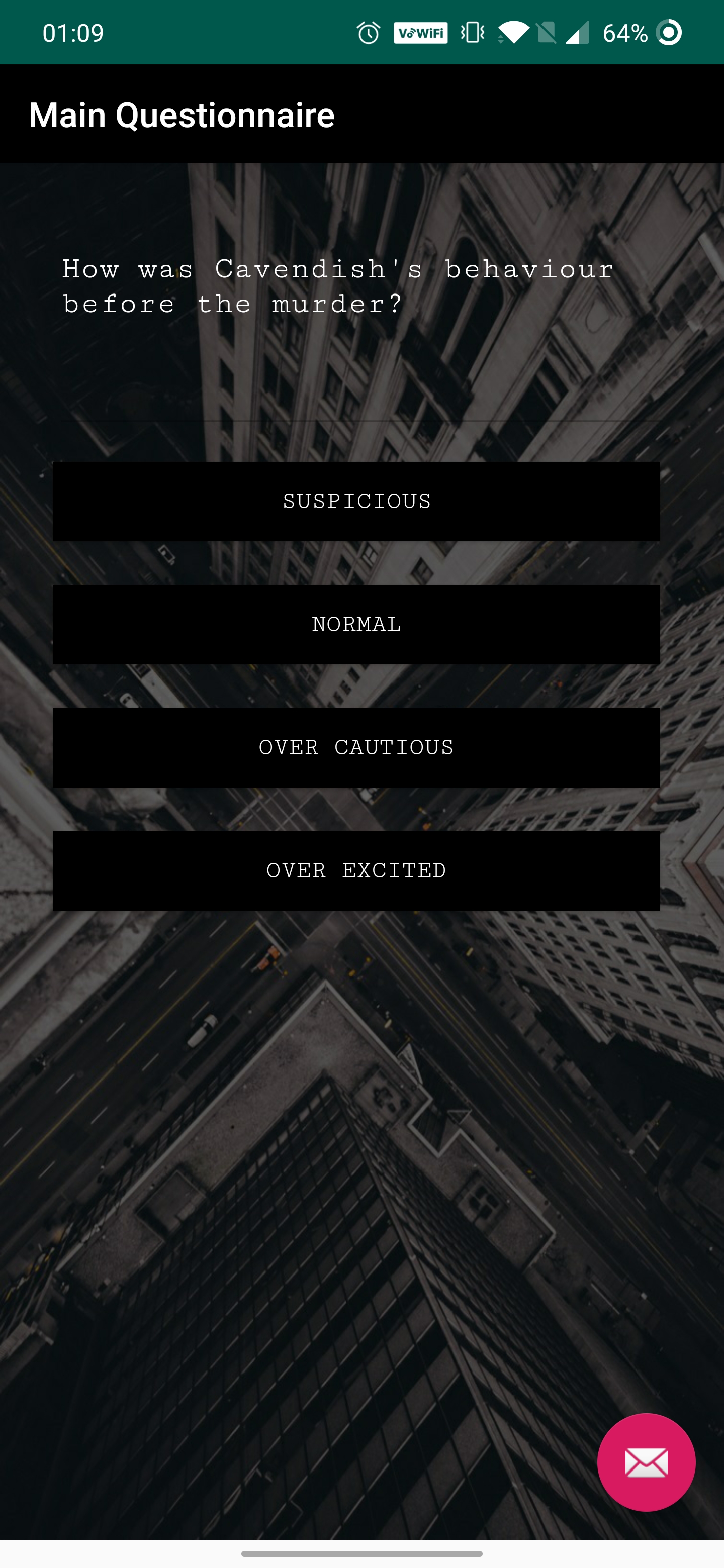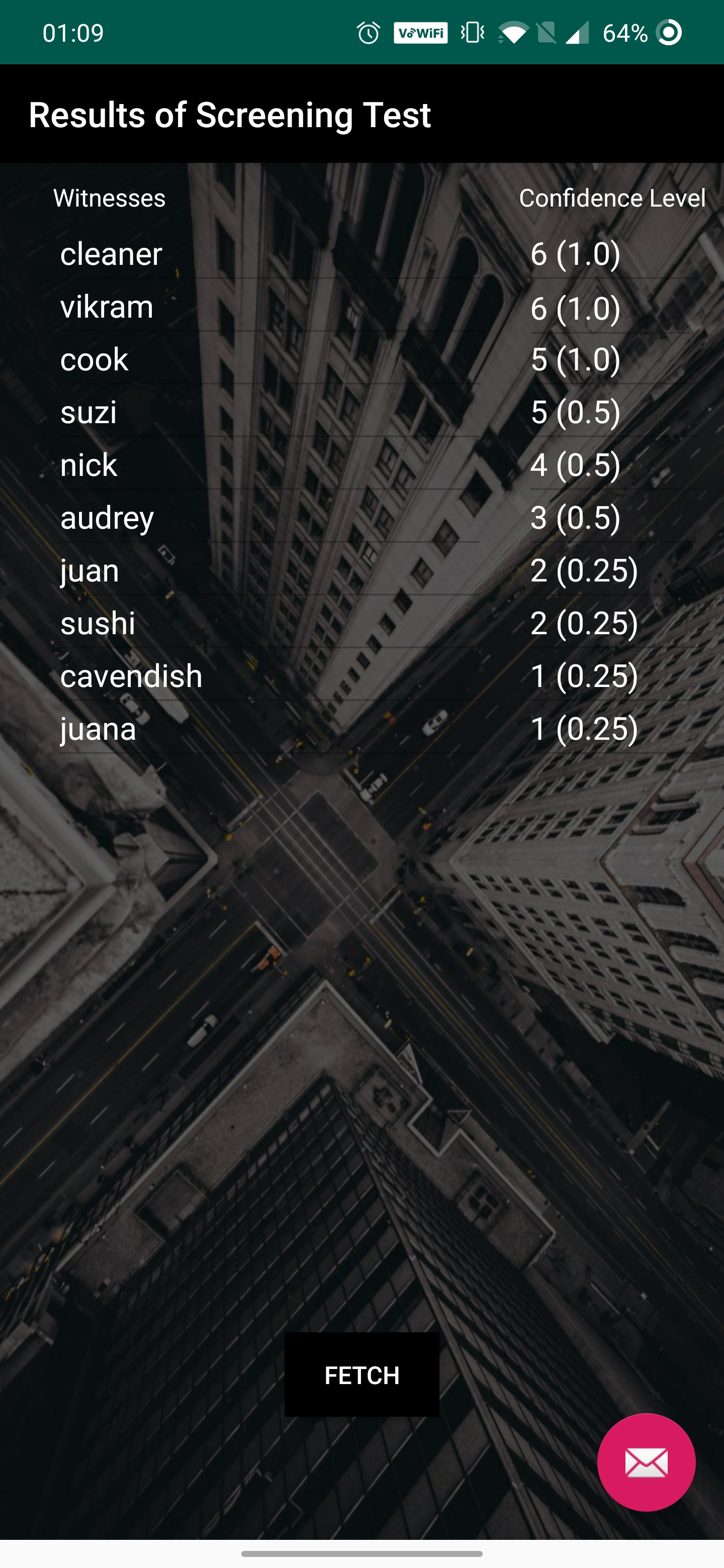An Implementation of a research paper titled "Witness Analysis using Self Learning Algorithm"
Click here to view the research paper
In India crime is primarily investigated by local police or law enforcement agencies such as CBI, ED to name a few. But at their core majority of the cases are solved manually, leading to a delayed justice and humane errors to creep in. Of these, numerous cases are highly witness reliant. In such cases even if one witness turns hostile it can totally change the course of the case. Hence we have developed an solution to effectively handle and interpret witness statements without discrepancies. The algorithm used is based on how humans interpret and develop trust with other humans. Not every witnesses opinion has the same gravity as that of another, to overcome this we have an unique scoring system that will aid the law enforcement authorities to deal with a large number of witnesses to get to the actual crux of the case in an fast and efficient manner.
India, a country of 1.6 billion people has an age old law enforcement infrastructure. The police force of the country is exceptionally unequipped to serve a nation of this scale. All this sums up to extended periods of time for a case to be investigated by the police, which may take years. For this particular paper we would focus on cases that are heavily reliant on witness testimony. A single case can have multiple witnesses and each one of the witness must be personally questioned by the investigating officer. Most of the times there is one investigating officer per case. This adds up a lot of time to record each individual statement and then analyzing it a totally different ball game. To ensure speedy justice, this process of interrogating and screening the witness can be automated. This particular paper highlights a method that has been modelled based on how human assess a persons credibility and trust factor.
Most of the witness reliant cases face a set of problems:
- Credibility of witnesses
- False Statements
- Hostile Witnesses
- Non-uniform enquiry
These are the major issues that investigators working on
witness reliant cases suffer. In order to solve these problems,
we have set a number of objectives that our algorithm must
fulfill.
Objectives:
- Multiple simultaneous statement entry
- Elimination of false or hoax statements
- Minimize the impact of hostile witnesses
- Produce a legally acceptable document containing the statements.
- Identify cases for which this technique is most effective.
- Enable the model to identify patterns and adjust accordingly (unimplemented)
In order to better understand the problem, it is necessary
for us to do ground research on existing methods of
solving it. This survey was done by personally visiting
several police stations and banks in the city.
Police Stations Surveyed:
- Shivaji Park Police Station, Dadar(W), Mumbai
- Wadala Police Station, Wadala(W), Mumbai
- Mulund Police Station, Mulund(W), Mumbai
Banks Surveyed:
- HDFC Bank, Mulund(E), Mumbai
The police officers were very helpful in giving us key insights how a case is handled and where and what difficulties they encounter in solving one. According to them most prevalent cases in today’s scenario are fraud and forgery cases that are heavily witness reliant. They even highlighted the essentials in solving a case.
- Intensity of offence
- Witnesses
- CCTV Footage
According to the officers to testify whether a witness is lying or not they highly rely on their instinct which is very irregular and may not give accurate results every time. Main problem is witnesses repeatedly changing their statements. By law the police cannot cross question the witnesses extensively, hence automating this task is very helpful to the police. Plus it is not possible to conduct lie detector test for all witnesses, as court orders are required.
We have methodized a solution that helps the police in processing a large number of witness inputs and get the actual insights of the case from it. Hence each case has it’s own unique set of questions. Various witnesses are added and each one is given the test to solve. To give an overview, the core process is divided into three phases:
- Screening Test
- Main Questionnaire
- Statement Analysis
Initially a case is broken down to it’s details and questions are formulated. Firstly a witness subject is asked to answer the Screening Test which consists of basic questions regarding the case( for which we know the answers to). Later on based on this score, he’s ranked amongst other witnesses and given a credibility score[1]. This credibility score(Multiplier) is unique to each witness and is then used to evaluate the credibility of his responses in the Main Questionnaire. Secondly the Main Questionnaire consists of questions that arise in the minds of the investigating officers( For which one correct answer cannot be fixed). Now each witness that has gone through the Screening Test is asked to answer this questionnaire. Based on his/her credibility score each response of each question is graded and the highest confidence response is assumed to be the prediction. Lastly all the insights gathered from these phases are presented to the authority which can help them in solving the case further.







